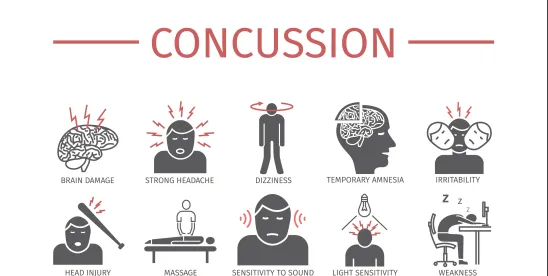When someone gets hit in the head, it can be tempting to brush it off as “just a bump” or a “mild” concussion. But the truth is, no head injury should ever be taken lightly. Even what seems like a small hit can cause lasting problems if it is not recognized and treated properly. September 19th is National Concussion Awareness Day, making it the ideal time to discuss why the idea of a “mild” concussion is a dangerous myth.
What is a Concussion?
A concussion is a type of traumatic brain injury (TBI), which occurs when a sudden force causes the brain to shift within the skull. This movement can stretch or damage brain cells, therefore affecting the brain’s functions. Concussions can result from falls, car crashes, sports injuries, or even bumping your head on a hard surface.
Symptoms may include:
- Persistent headaches
- Dizziness or light-headedness
- Confusion
- Blurred vision
- Nausea
- Increased sensitivity to light or sound
- Difficulty concentrating
Some signs may appear immediately, while others may emerge hours or days later, which is why it is so important to monitor anyone who has suffered a head injury.
Why “Mild” Concussions Are Still Serious
Medical professionals sometimes use the word “mild” to classify a concussion that does not show up on brain imaging or require surgery. However, “mild” does not mean harmless. The National Library of Medicine (NLM) reports that approximately 3.8 million concussions occur each year in the United States from sports and recreational activities alone, and as many as 50% of them go unreported. Many of these patients report lasting issues, such as memory loss, mood changes, and difficulty focusing, long after the initial injury.
Another concern is cumulative trauma. Multiple concussions over time, especially in athletes, can increase the risk of long-term brain conditions. The effects of repeated injuries are well-documented in professional athletes, but youth and high school athletes are also at risk.
Concussion Awareness in Michigan
Michigan lawmakers have taken steps to protect young athletes through the Youth Concussion Law (Public Acts 342 and 343 of 2012). The law requires:
- Coaches, athletes, and parents must receive concussion awareness training and education.
- Any athlete suspected of having a concussion must be immediately removed from play.
- Athletes cannot return to play until they have received medical clearance from a licensed health professional.
These safeguards are meant to prevent serious complications, such as second impact syndrome, which happens when a person suffers another concussion before the first has fully healed. This can lead to permanent brain damage or even death.
While these protections exist for youth sports, concussions also occur in everyday life through slip and falls, car accidents, and workplace injuries. Unfortunately, not all organizations or employers take brain injuries seriously, and people may not get the care they truly need.
How to Respond to a Head Injury
The best way to prevent complications is to treat every head injury as ser./ous. Seek medical attention right away, follow all treatment and recovery instructions, and avoid returning to sports or demanding tasks too soon. For parents, asking schools and sports leagues about their concussion protocols is an important step in keeping children safe.
Conclusion
The idea of a “mild” concussion can give people a false sense of security. In reality, there is no such thing as a harmless brain injury. Awareness, medical care, and safety laws like Michigan’s Youth Concussion Law are critical in preventing long-term harm.




 />i
/>i

